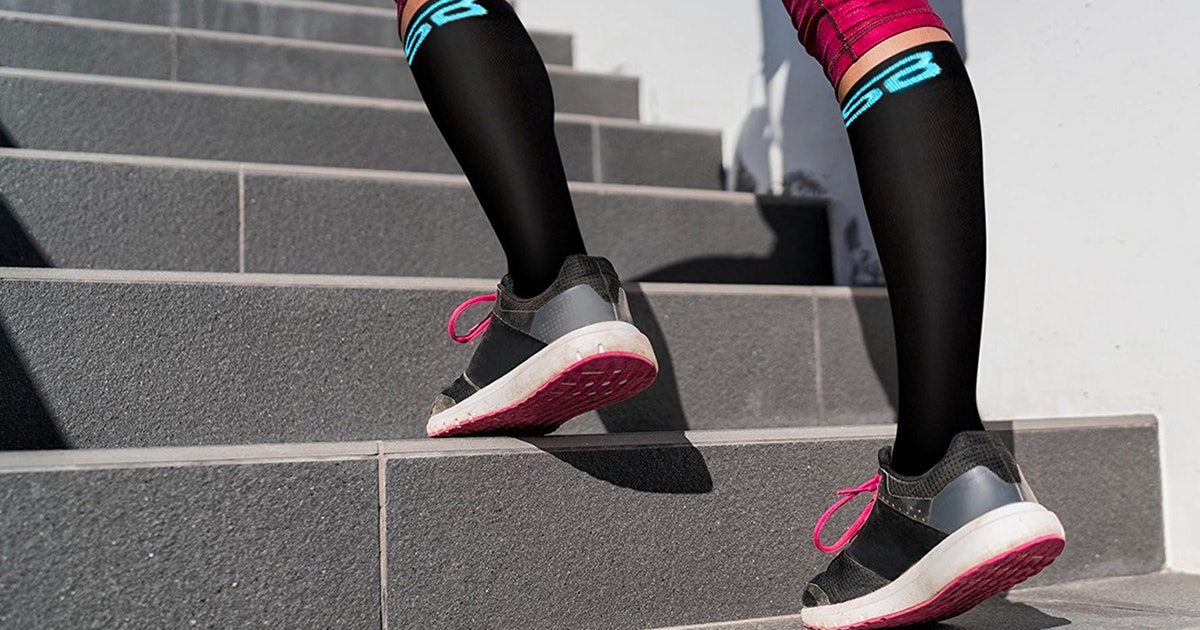Treatment Options For Swollen Ankles
Swollen ankles are easy to come by. Whether you slip on some ice or even just take one wrong step, your ankle can suffer and end up swelling. Sometimes, these cases may actually be a sign of a bigger health problem. For instance, individuals who have problems with their liver may notice their ankles and feet swell. The same can be said for individuals who have a blood clot. However, typically, swollen ankles are merely a cause for a misstep or a small accident. They can be slightly painful and unsightly, unfortunately, so finding measures to treat them are critical. This article will go over methods individuals can use to treat a swollen ankle.
Supportive Compression Socks

An easy way to make sure your ankle and foot don't swell a lot is to use supportive compression socks. These can be easily acquired at most pharmacies, grocery stores, and online. Compression socks are extremely easy to use and can offer pain relief as well as keep fluid from collecting in the ankle and foot. Since there are many different kinds of socks available, it's recommended to wear a lightweight compression sock to start. If you choose to go overboard and go straight for a heavyweight compression sock, you might end up cutting off the circulation to your foot. Numbness in the foot is a sign of circulation having difficulty in reaching the lower extremity. The goal is to reduce the flow not necessarily prevent it. Since you could lose your foot if the compression is too tight, exercise caution.
Learn more about treating swollen ankles now.
Rest The Ankle

Sometimes recovery can be as simple as just letting the ankle rest. Depending on how the swollen ankle came to be, the muscles and ligaments of your ankle could have been strained, thus causing inflammation. Once it has received a proper amount of rest to heal and recover, the swelling will go down. A way to help speed up the recovery and rest the ankle properly is to elevate it. Whether you have to stack a few books with a cushion on top or recline your seat back a bit more, make sure your foot is at a good elevation compared to the rest of your body. This can help limit the amount of fluid that ends up clogged in your ankle and foot. You may even find it beneficial to help your ankle rest by applying a warm salve to the area. This can promote the body to heal faster and relax. In so doing, the swelling might just become reduced, too.
Keep reading to discover the next option for treating a swollen ankle.
Anti-Inflammatory Medication

Since swollen ankles are typically due to the muscles and ligaments becoming inflamed, it may be prudent to take anti-inflammatory medication. These can easily be found over the counter, and include ibuprofen and naproxen. These medications work to target the areas of inflammation and shut down the processes of the body that lead to inflammation. They typically provide pain relief as well. Anti-inflammatories can also be found naturally, specifically through dietary choices. Spices like turmeric, ginger, cinnamon, garlic, black pepper, clove, and cayenne have all been found to help reduce inflammation as well.
Unveil another way to treat swollen ankles efficiently now.
Repair With A Cast

It is also possible to help a swollen ankle with a cast. The rigid support of the cast forces the muscles and ligaments to connect and repair themselves faster than they might when left on their own. If your swollen ankle was caused because of a broken ankle or foot, the cast is going to do the same thing except also promote healing of the bone. However, with the use of a cast, it may become possible for the swelling to increase. This is typical of individuals who are using a cast but do not properly take care of themselves. When using a cast, be sure to elevate your leg regularly. Since your ankle is under a lot of pressure, fluids are going to be collecting in that area often. Elevation allows the fluid to drain back up the leg instead of being stuck in the tight confines of the cast. In addition, seek to regularly move when wearing a cast. By frequently moving, you can help your muscles develop and strengthen the ligaments. It may also be prudent to dry the cast, as water can cause swelling to the skin if there is consistent touch. You can dry it with ice. With support and regular moving, you can repair with a cast with ease.
Continue to learn about more options for treating swollen ankles now.
Surgical Correction

In cases where an individual has diabetes and has swollen ankles, surgical correction may be required to save the rest of the body. In terms of diabetes, swelling can be an indication the body has received nerve damage on top of other issues. For example, a patient can develop a blister, and without having sensation in their foot, that blister can open up and become infected. The infection can then spread to the bone or other parts of the body, which could have lethal consequences. When that occurs, things like amputation are required. To ensure such dire consequences are not taken, it may be prudent for a surgeon to help with the problem that's causing the swelling. It could be something with the veins or a problem with the muscle if it's pushing against the veins. If your ankle refuses to return to its normal size after you've attempted these other remedies, speak to a surgeon for a possible correction.